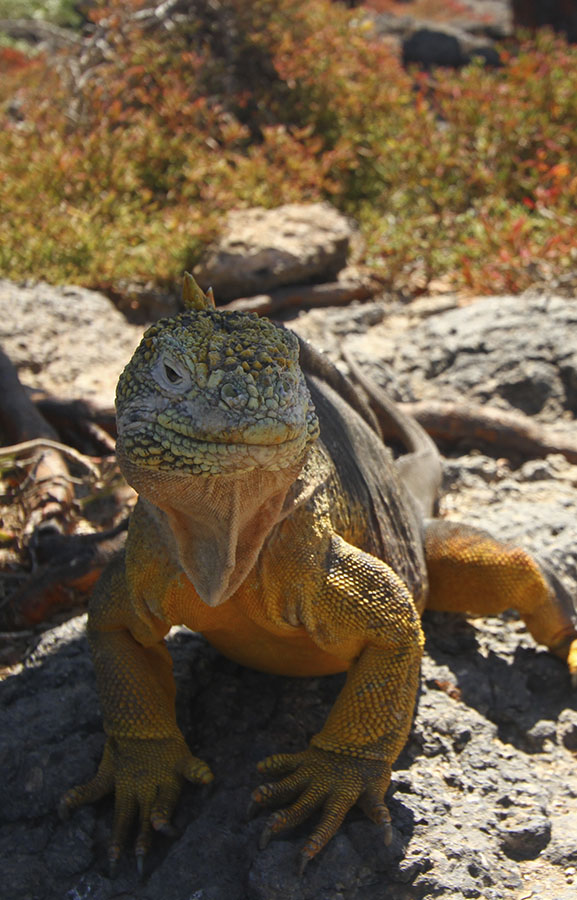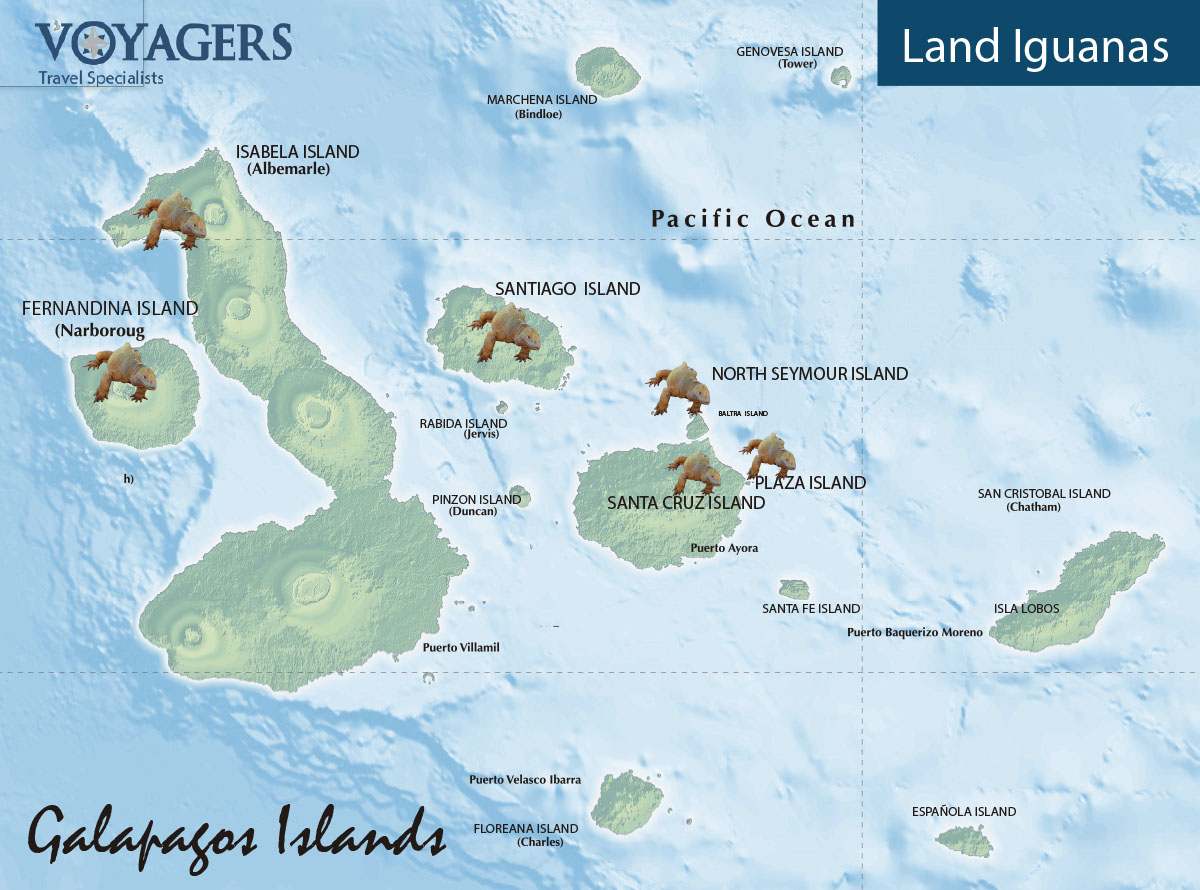Land iguana lifestyle
Not much different from humans iguanas’ life aspirations include lying under the sun, eating tasty fruit, prove their worth, meet love, and avoid extinction.
Cold-blooded as they are, iguanas seek sunlight like bees nectar. Not a difficult task in the ever sunny Galapagos. But, don’t iguanas get sunburn? An understandable question from a human. The reality is that iguanas have evolved a tough skin that can resist the powerful equatorial sunlight.
Because iguanas are cold-blooded they have a slow metabolism that enables them to survive with very little food. Only the most resilient animals colonized and made this volcanic archipelago a home. Today, iguanas enjoy the tasty delights offered by prickly cactus fruit and its spiny pads, insects, and carcasses if given no choice. Water is as scarce as food, so when it isn’t available they will survive with the moisture provided by their cacti diet.
Generally, iguanas are social and take to groups. Male iguanas, however, will threaten any opponent that gets too close to its territory which is typically populated by more than one female. To defend its territory the male iguana will aggressively nod its head, and sometimes a biting and tail-thrashing battle may break out.
Female iguanas are not as aggressive as their male counterparts but they compensate by being picky. They are known to not settle for just any spot to make a nest. To secure an ideal spot to lay their eggs female land iguanas are determined to travel great distances — most times ending in sandy beaches and very rarely in ashy dormant volcano craters.
Young iguanas have a hard beginning. They have to dig their way out of the nest and once out they must adapt the new dry environment while avoiding larger predators. In general, land iguanas are considered a vulnerable species likely to become endangered unless its conditions improve.
True fighters, the Galapagos land iguanas were recently given a chance to fight even harder for their survival by being reintroduced to their old home, Santiago island. New home, new life, new visitors — the land iguana has a promising 2019.
5 amazing facts about the Galapagos land iguana:
- For iguanas, 55 years is as old as you can get.
- If you do weight lifting, don’t worry. The average iguana weights 13 kilograms.
- Iguanas can stretch up to 1.5 meters.
- Female land iguana + male marine iguana = a hybrid iguana!
- There have been no iguanas in Santiago island for centuries. Find out why.












